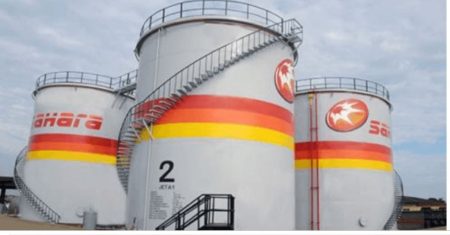Wood Mackenzie, a leading global energy research firm, paints a concerning picture of the Nigerian National Petroleum Company Limited’s (NNPCL) long-term production outlook. Their analysis, presented in a recent podcast, reveals that while NNPCL harbors ambitions to expand its operations and bolster Nigeria’s upstream sector, its current portfolio is heavily burdened by a significant number of sub-commercial assets, raising serious concerns about its long-term viability. This vulnerability is exacerbated by NNPCL’s unique position compared to other national oil companies: its production is largely reliant on assets operated by international oil companies (IOCs) and indigenous producers, leaving it with limited direct control over output and susceptible to investment decisions made outside of Nigeria. Wood Mackenzie predicts a short-term production increase, peaking around 2026, followed by a steep decline, potentially halving output by the late 2030s. This troubling forecast stems from a lack of robust project pipelines and the inherent risks associated with relying heavily on non-operated assets.
The core of NNPCL’s dilemma lies in its asset portfolio. While boasting substantial resources, a significant portion remains commercially unviable. This necessitates the involvement of external players, particularly IOCs, whose capital investments are crucial for developing these resources. NNPCL’s success hinges on attracting these investments, which requires the company to compete effectively with other global opportunities for capital allocation. However, Nigeria’s historical challenges with operational costs, security concerns, and regulatory hurdles pose significant barriers to attracting the necessary investment. Wood Mackenzie emphasizes the urgency for NNPCL to address these issues to ensure its long-term viability and competitiveness in the global energy market. The company’s future success hinges on its ability to transform its substantial, yet largely untapped, resources into commercially viable projects that attract the capital necessary to drive growth and reverse the projected production decline.
Adding to NNPCL’s challenges are the ambitious production targets set by President Bola Tinubu’s administration. The government aims for an oil production of 3 million barrels per day, gas output of 10 billion cubic feet per day, $60 billion in investment, and a domestic refining capacity of 500,000 barrels per day by 2030. Wood Mackenzie cautions that these targets may be overly optimistic given the structural inefficiencies and fiscal hurdles plaguing the sector. Overcoming these obstacles requires a concerted effort to improve operational efficiency, reduce costs, and create a more attractive investment climate. The company’s ability to meet these targets will be a testament to its adaptability and capacity to navigate the complex dynamics of the Nigerian energy landscape.
Gas development, a key area for growth, also faces significant constraints. While Nigeria possesses substantial untapped gas reserves, predominantly in the Niger Delta, less than 20% are commercially viable due to inadequate processing and transportation infrastructure. The long-delayed OB3 pipeline, intended to connect eastern Delta gas fields to markets like Lagos, exemplifies this infrastructural deficit. Its completion is viewed as crucial for unlocking the potential of these stranded resources and boosting overall gas production. Addressing this infrastructural gap will be crucial for achieving the government’s ambitious gas production targets and capitalizing on the growing global demand for natural gas.
Furthermore, NNPCL grapples with higher operational costs compared to its peers. Factors such as barrel losses due to theft and pipeline vandalism, insecurity in operational areas, and policy challenges, including local content regulations, contribute to this elevated cost base. Wood Mackenzie emphasizes the urgency for NNPCL to address these cost competitiveness issues, particularly if it intends to attract investors or pursue a future Initial Public Offering (IPO). Improving cost efficiency is essential for enhancing profitability and attracting the investment needed to fund future growth and development.
The changing dynamics of the Nigerian upstream sector, marked by the withdrawal of major oil companies from onshore and shallow water assets, further complicate NNPCL’s situation. This shift has placed greater emphasis on deepwater fields as the primary focus for investments. Projects like Bonga North, having achieved Final Investment Decision in 2023, are expected to play a pivotal role in any future production recovery. However, with the departure of international oil majors, the traditional financing models are also changing. Indigenous partners are less likely to offer the same carry arrangements, placing the onus on NNPCL to secure financing independently, a critical factor for future growth.
Despite these challenges, Wood Mackenzie acknowledges Nigeria’s significant untapped potential, particularly in its deepwater reserves. Realizing this potential, however, requires a multifaceted approach. Aggressive project development, stringent cost control measures, and greater regulatory clarity are essential to attract the necessary investment and drive production growth. Timely Final Investment Decisions (FIDs), increased capital inflow, and the removal of infrastructural bottlenecks are key to reversing the projected production decline and securing Nigeria’s position as a major player in the global energy market.
In summary, NNPCL faces a pivotal moment. While possessing substantial resources and harboring ambitious growth plans, the company must confront several key challenges. Overcoming these obstacles requires a concerted effort to enhance operational efficiency, address cost competitiveness, secure financing for future projects, and navigate the evolving landscape of the Nigerian upstream sector. The success of these endeavors will determine whether NNPCL can achieve its growth ambitions and fulfill Nigeria’s potential as a major energy producer. The company’s future rests on its ability to transform its vast potential into tangible results, driving production growth and securing a sustainable future in the global energy market.














